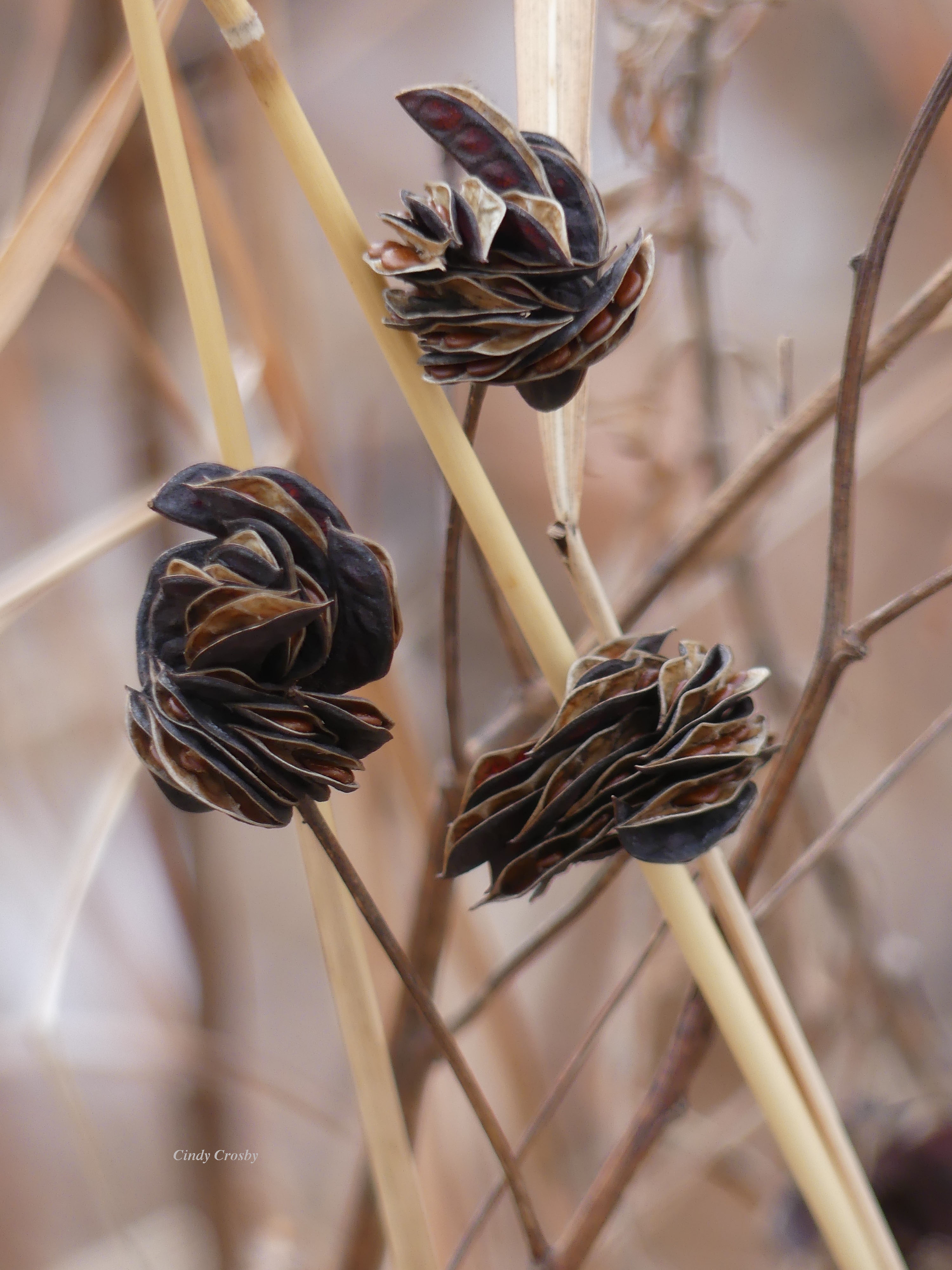“Mystery whispered in the grass, played in the branches of trees overhead, was caught up and blown across the horizon line in clouds of dust at evening on the prairies.” — Sherwood Anderson
*****
Come walk with me. The prairie is calling. Who knows what we’ll see?

The prairie is awash in wildflowers.

Pale purple coneflowers bounce like badminton birdies across the tallgrass. Large elephant ears of prairie dock vie with the clear blue-violet spiderwort blooms, which open in the mornings and close when the sun is at its zenith.

Look along the trail. See the pale wild petunias? They pioneer their way along the path edges, and are a host plant for the buckeye butterfly. Oddly enough, they aren’t a close relative of the petunias we see in cultivated borders and flowering baskets.

Look up! See the clouds roll in across the unbearably bright prairie sky.

Kneel down and there’s a whole world waiting to be discovered. Tiny creatures hide in the petals of smooth phlox…

…or buzz along the just-opened flowers of leadplant.

Yet despite all the hustle and bustle, there is peace here.

It’s also cooler this week after days of brutal heat and humidity. Such a respite. A relief.
Let’s walk to the bridge over Willoway Brook and sit for a while.

Dangle your feet over the bridge. Look into the stream. The shadows of cruising stream bluet damselflies ripple when the sun breaks through the clouds.

Nearby, the female ebony jewelwing damselfly is poised for courtship. The male is just a few feet away, waiting to woo her.

Other damselflies cover the vegetation in tandem, bumper-to-bumper. It’s rush hour.

Variable dancer damselflies offer a contrast in male and female Odonata coloration. Entomologists call this “sexual dimorphism,” which, simply put, means the female is different than the male in some way that doesn’t have to do with reproduction. In this case, color.

The American rubyspot damselfly stakes out its claim…

…while a twelve-spotted skimmer dragonfly rests in the shade.

Watch out for turtles! A dragonfly or damselfly would be a tasty snack for this red-eared slider.

Life for damselflies and dragonflies is tenuous. The snap of a turtle’s jaws or smack of a bird’s beak and—it’s all over. But what glorious sparks of color these insects give to the summer prairie during their brief time here! They are rivaled in color only by the wildflowers, which are building toward their colorful summer crescendo.

Prairie coreopsis are splashes of sunshine across the prairie. Ants investigate the new buds.

New Jersey tea, one of my favorite prairie shrubs, froths and foams like a cappuccino.

Carrion flower—-that strange member of the prairie community—twists and turns as it vines toward the sky. I inhale, and get a good sniff of the fragrance that spawned its name. Whew!

Culver’s root is one of the most elegant prairie wildflowers, and a magnet for pollinators. Today, though, it’s mostly bare of insects.

There’s so much to discover on the prairie at the end of June.

Why not go for a hike and see?
*******
Sherwood Anderson (1876-1941), whose quote kicks off this blog post, was best known for his short story cycle Winesburg, Ohio (also adapted as a well-known play). The quote was taken from The Tallgrass Prairie Reader, edited by John Price.
*****
Join Cindy for a Class or Program!
Wednesday, June 29: “100 Years Around the Morton Arboretum” –with Cindy and Library Collections Manager and Historian Rita Hassert. Enjoy stories of the past that commemorate this very special centennial. Join on Zoom June 29, 7-8:30 p.m. by registering here.
Thursday, July 14 (Zoom online) and Friday, July 15 (in person field class): “Beginning Dragonfly and Damselfly Identification“: Discover these beautiful insects through this two-part class, offered by The Morton Arboretum. Space is limited — register here.



































